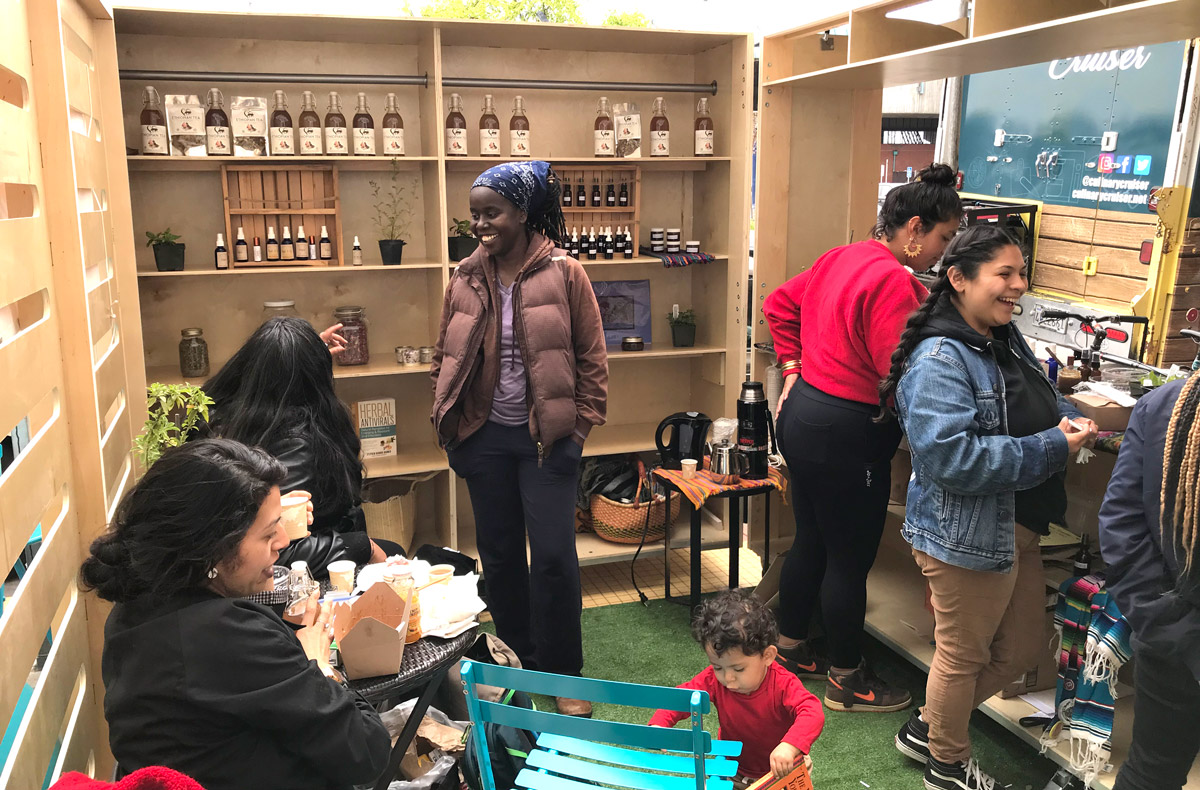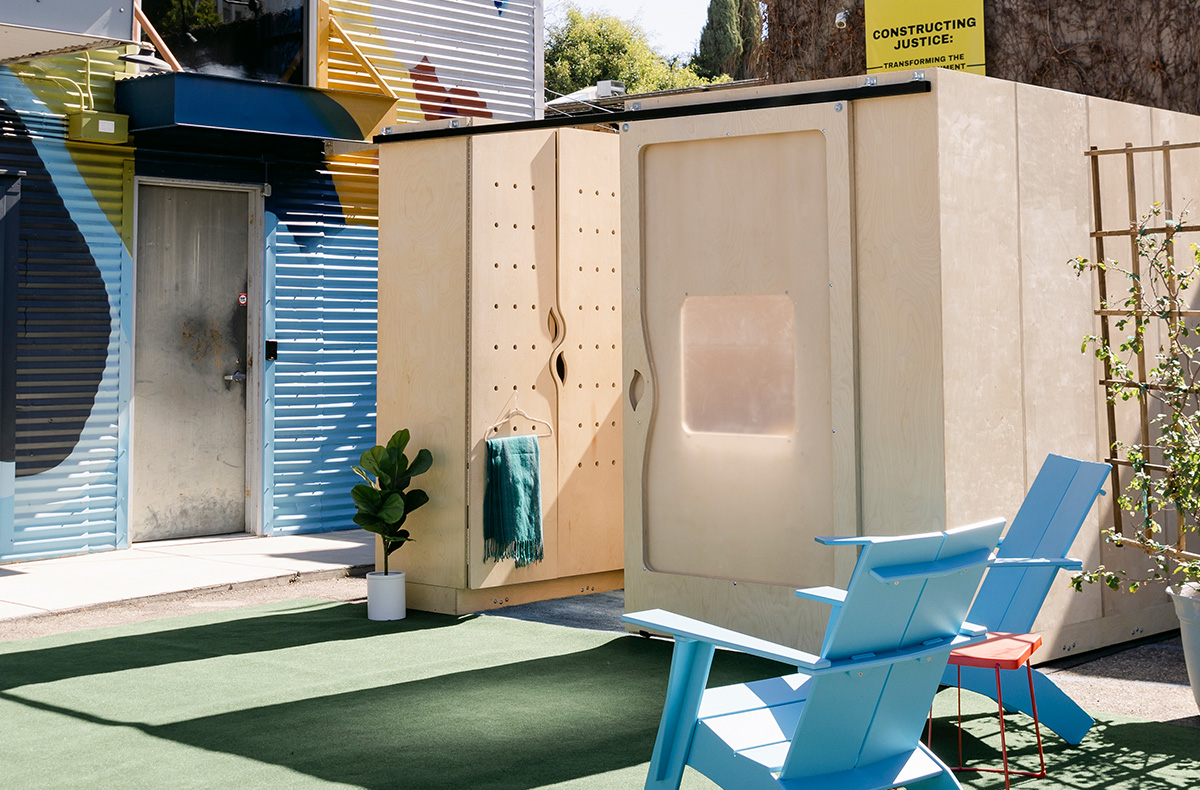
The Design Observer Twenty | Sponsored by IDEO
The Design Observer Twenty is our curated selection of twenty remarkable people, projects, and big ideas solving an urgent social need.
And none of these interventions make anyone safe.
Van Buren and her team are working to end mass incarceration by building alternative care infrastructure that supports community, healing, and justice. She has become one of the leading designers and researchers focused on restorative justice as a physical space and design practice. “To end criminalization, policing, and prisons, we need to build up life-affirming practices, institutions, and infrastructure that generate care and safety,” she says. “We need to build care infrastructure on several levels: personal, interpersonal, and communal.”

The Pop-Up Village is a site activation project that harnesses the power of design to catalyze the magic that emerges when people and programs come together in public space. Image: Designing Justice + Designing Spaces
To fund these expansive solutions, Van Buren employs a unique business model that employs a development fund to leverage both philanthropic and private dollars. One finished real estate project is Restore Oakland, a multi-use hub that is the country’s first center for restorative justice and economics— boasting richly hued meeting rooms function as “movement incubators” and are available for use by neighborhood organizations, justice programs, local business owners and advocates. Another is the Five Keys Mobile Classroom, a learning space built in a functional bus to provide essential education to school children in under-resourced communities who cannot afford transportation to a school building.

Mobile Refuge Room. Image: Designing Justice + Designing Spaces
In 2020, Van Buren asked listeners of the Design of Business | Business of Design podcast to imagine a world without prisons, an exercise she had led recently at an Atlanta-area detention center. “Imagine a place, a center for equity. People can drop off their kids for daycare. They can get some food, meet with a lawyer, look at record expungement. You can go for a restorative justice process if you need to,” as quickly as you can pick up some groceries. What would it take to welcome this center into a community? What would it take to co-create a space that meets everyone’s needs?
“I think for designers, the most powerful thing we can be doing right now, is using our creative minds and practices in the agency of imagining a different future with people,” she says. It took a video of a police officer standing on a Black man’s neck to realize the extent of the problem with criminal justice. “We have to get people to think outside of their narrow-minded thinking,” she says. “Creative practice is a great way to do that.”
Essay by Ellen McGirt.

